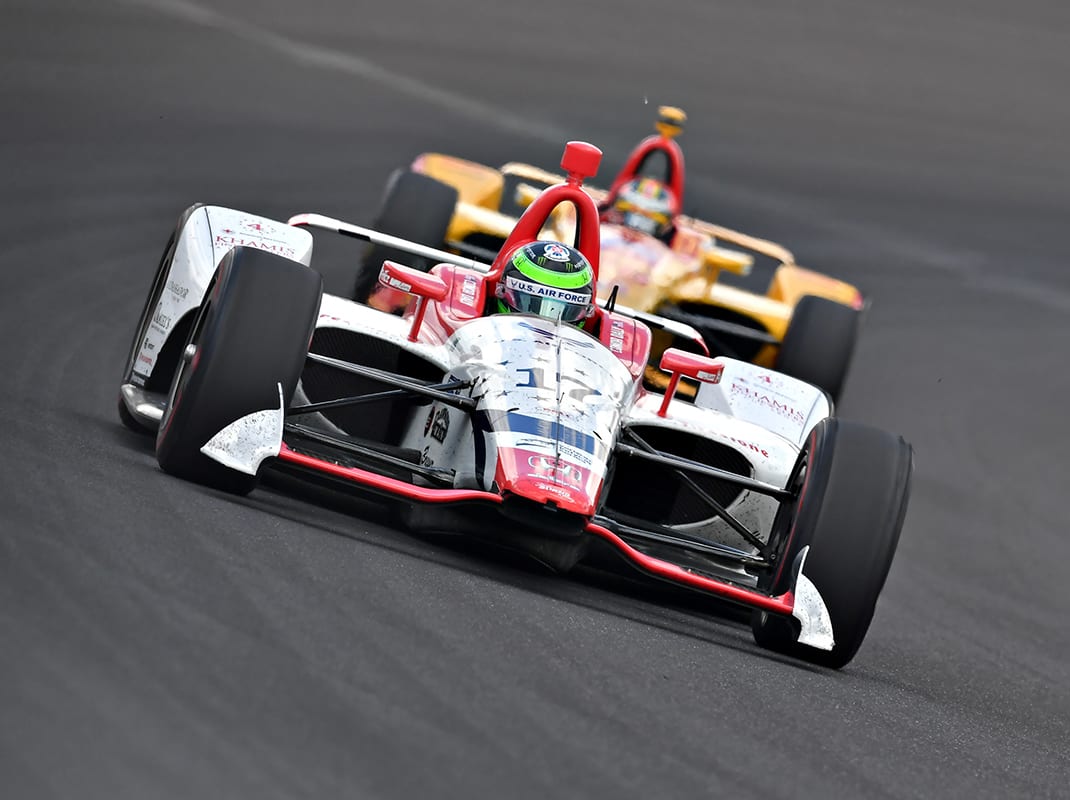Making the starting field of 33 for the Indianapolis 500 is a dream of many race car drivers around the world.
It’s also the goal of many team owners, who take the financial risk to find a car and parts, negotiate an engine lease and find crew members.
For the greater part of Indianapolis 500 history, privateers could build an Indy car in their garage by welding a tube frame and applying sheet metal. This was in the era of innovation, when imagination ran free and the cost to play was so much lower.
This often resulted in a large number of cars attempting to qualify for the race, but out of those that made the 33-car starting lineup, the number of entries with a legitimate chance of winning was four or five cars at best.
That changed with the introduction of the carbon-fiber chassis.
The composite material is much stronger, much lighter and far safer than the old tube-frame and sheet-metal creations. It’s also much more expensive.
There remain team owners and drivers who are interested in competing only in the Indy 500 instead of fielding the car for the entire season.
The Indianapolis 500 also has a bigger starting field than any other race on the NTT IndyCar Series schedule. The standard car count for a race outside of the 500 is 24 to 26 cars.
The Indianapolis 500 field is completed by drivers who don’t have a full-time ride and team owners who partner with or become satellite operations for existing NTT IndyCar Series teams.
“It adds a lot to the event,” IndyCar President Jay Frye told SPEED SPORT. “When you look at the car count, we’ve added depth to the league that runs every week and that has added more depth and breadth to the Indianapolis 500, and the car count continues to go up. What we have tried to do is stabilize the parts, pieces and the expenditures going forward so they know what we are doing. We should have more cars this year than last year, so that showed growth. Hopefully, next year will have even more cars than that, too.
“We help connect the dots for these teams. Most of them that have come in already have an understanding. Dreyer & Reinbold comes in and they are clearly very, very good with a two-car team. It’s a legit team. It’s a good program. They could run in this series every week.
“Every week, we have a very solid field and that shows at the Indianapolis 500. We are getting more cars and the quality of the group is pretty strong.”
When Conor Daly’s Indianapolis 500 effort was announced as an extra Andretti Autosport entry, the young driver from Noblesville, Ind., estimated his deal at close to $1.2 million.
Other team owners, such as the Jonathan Byrd family, have been able to strike deals with smaller teams such as Dale Coyne Racing and Schmidt Peterson Motorsports over the years.
As times have changed at the Indianapolis 500, there remain opportunities to make the race for extra drivers who are able to get one of the prized extra entries from an existing team. For some of those team owners, it can serve as the launching point for a more extensive schedule further down the road.
That is the case with famed IMSA team owner Mike Shank. He was one of the one-off Indy 500 owners in 2017 when he teamed with Andretti Autosport and driver Jack Harvey. That grew into a six-race effort with Schmidt Peterson Motorsports in 2017. This year, the team and Harvey will run 10 of the 17 events.
“The only real way to do it is to have a technical alliance with someone so you can rent the cars, and the equipment and the technology,” Shank told SPEED SPORT. “You can still do it the old-fashioned way — show up with your car and try to run. But if you want to be competitive and try to make the show — and it’s try and make the show again — you start with a technical alliance.
“If you are lucky enough to find one, then you bring your guys. In my case, it was my team from my sports car program who didn’t have anything to do that month. I got lucky there,” Shank added. “We try to rent everything as much as we can — fuel rigs, wheel guns, radios — we rented everything we could rent. You are looking at a $750,000 to $800,000 endeavor, no matter what you do. By the time you rent all your stuff and not buy it, it’s still $800,000.”
